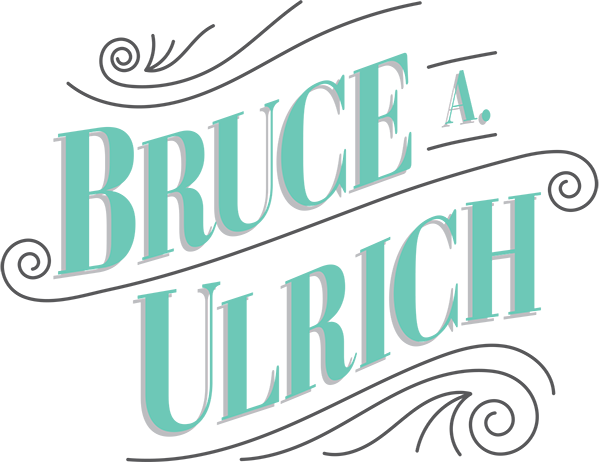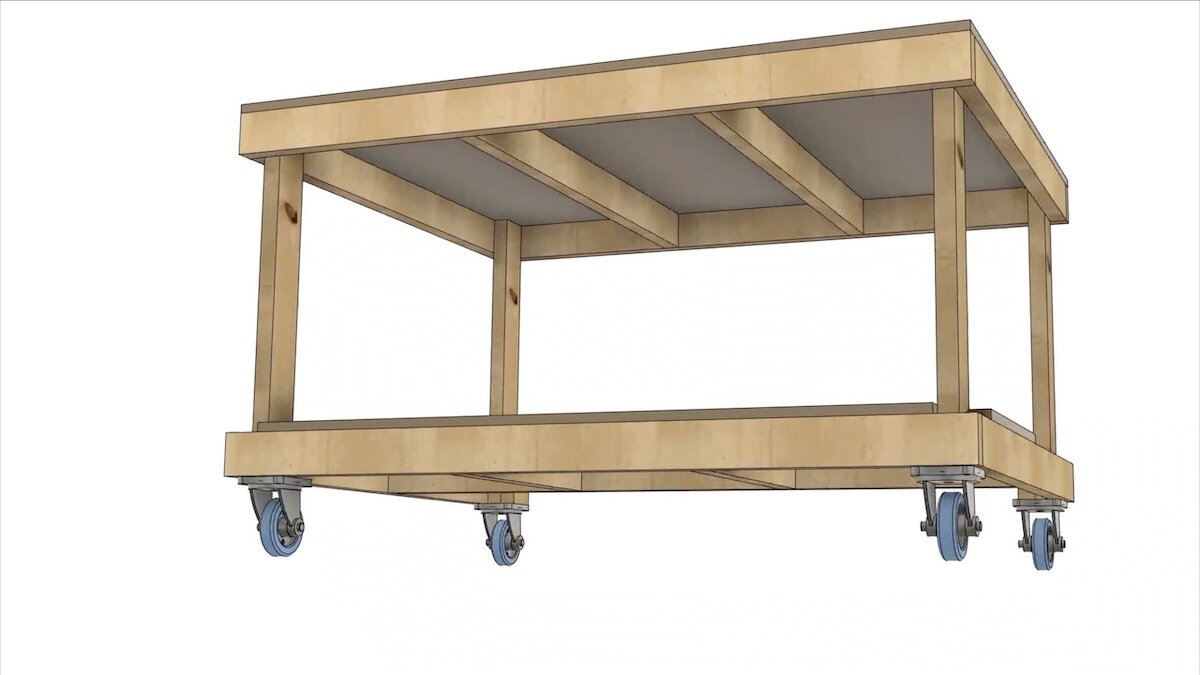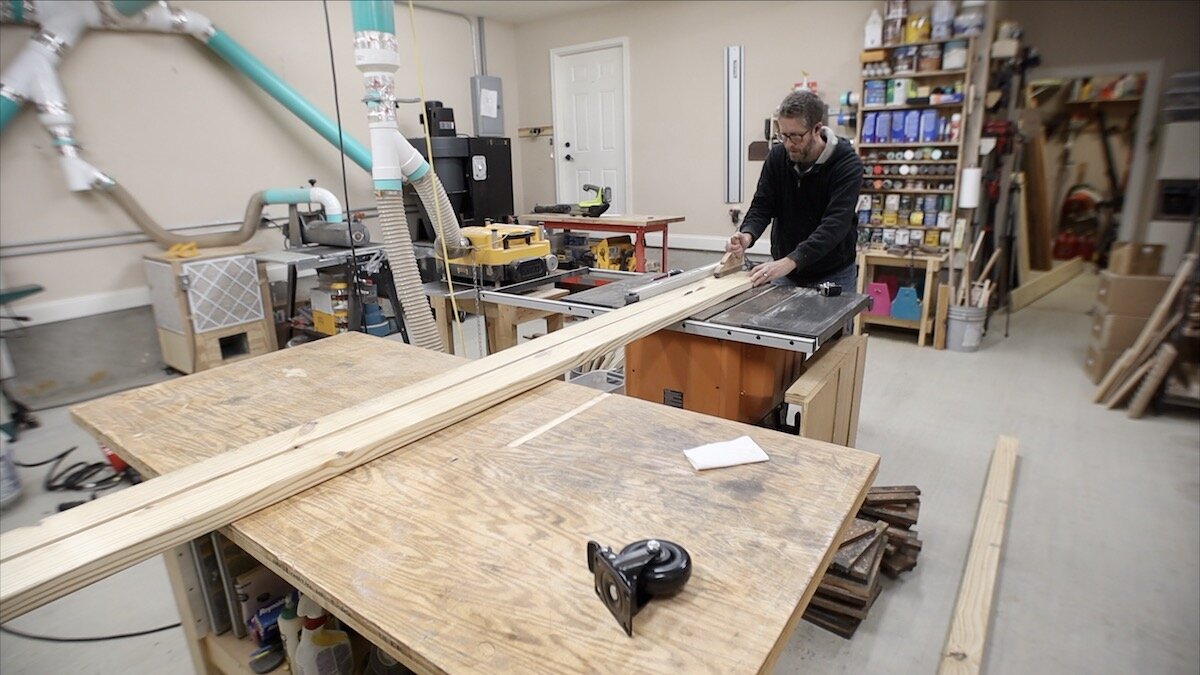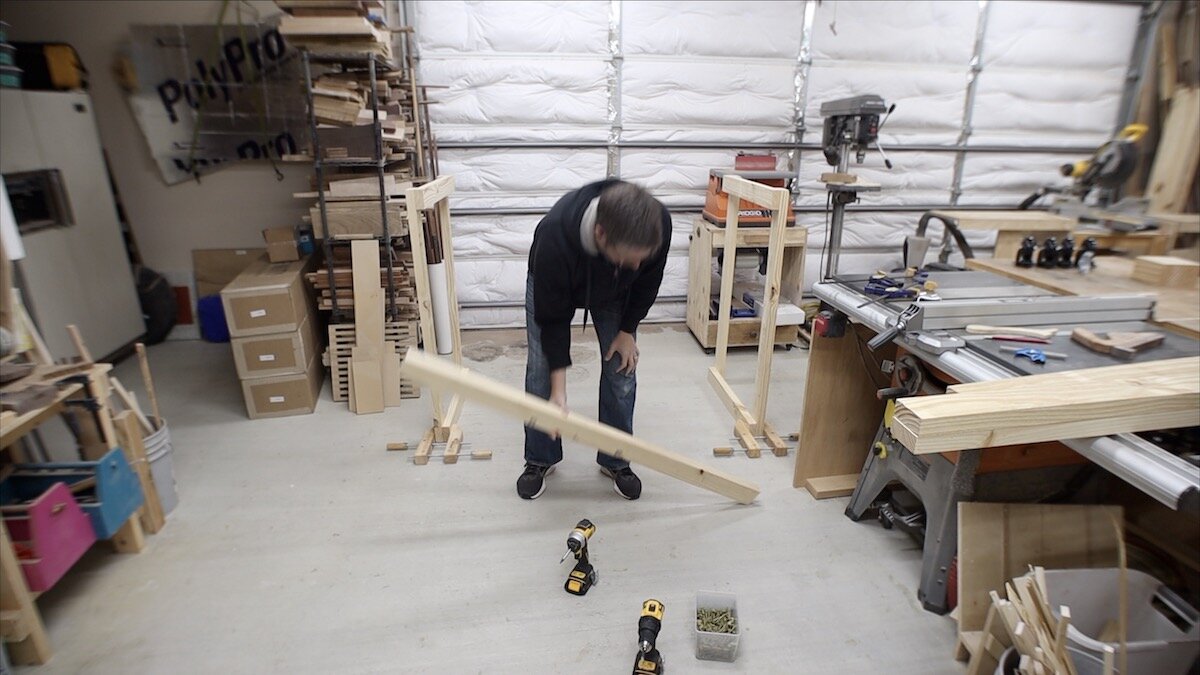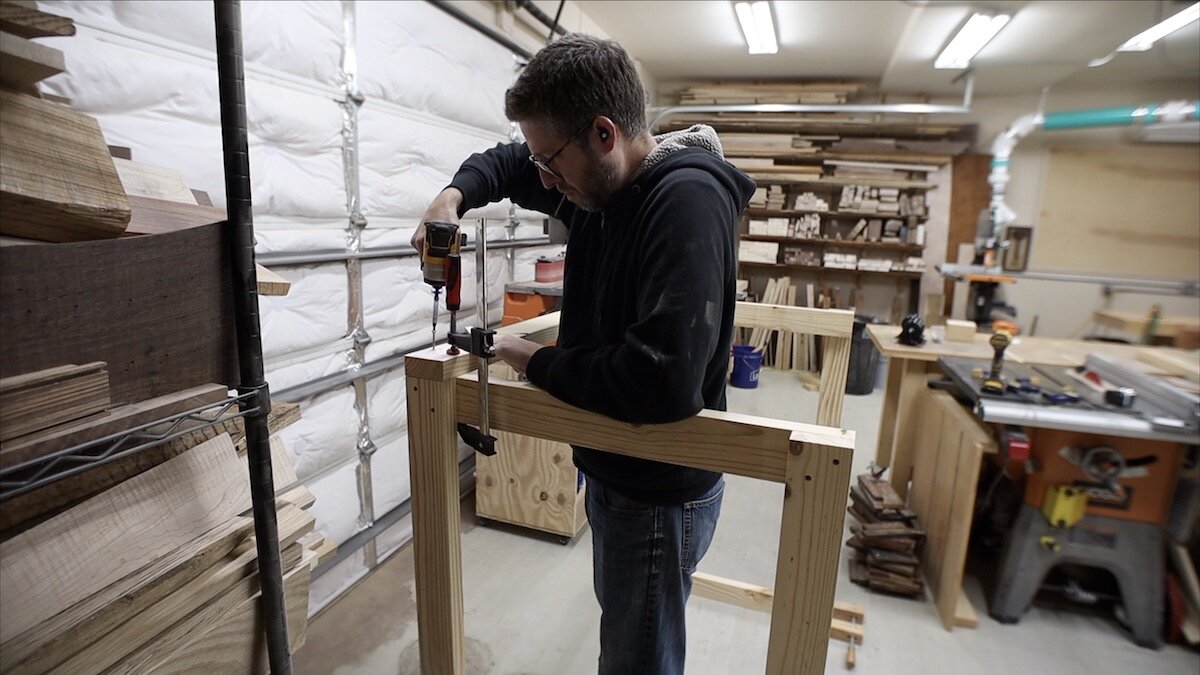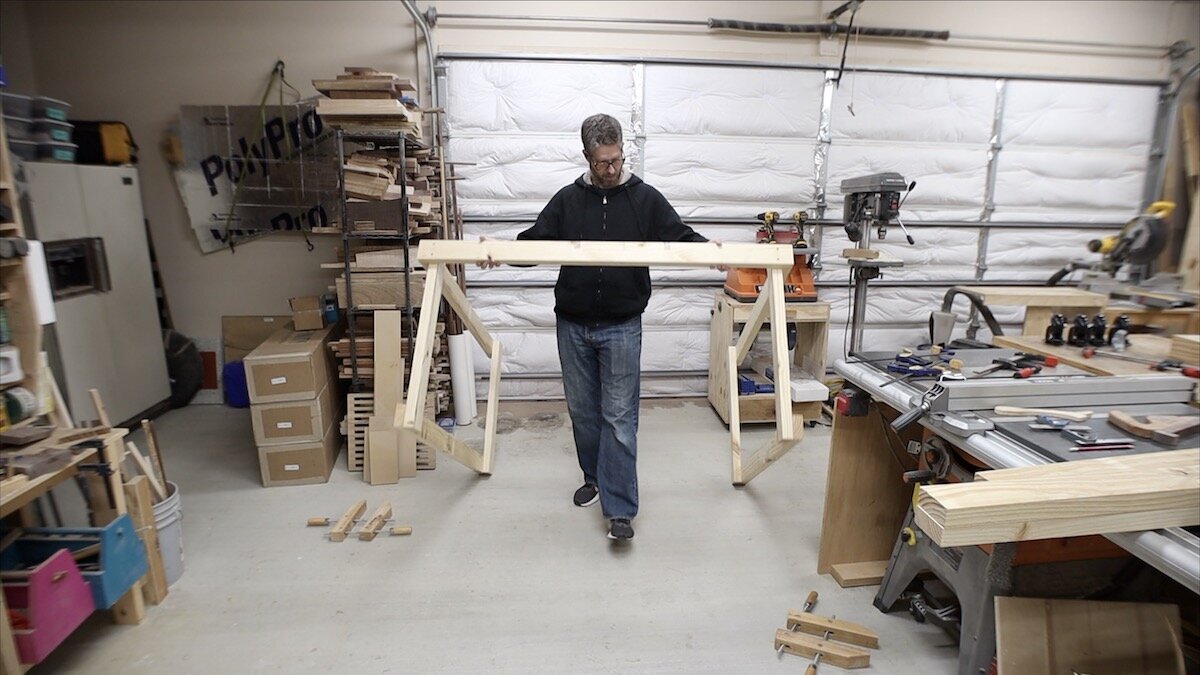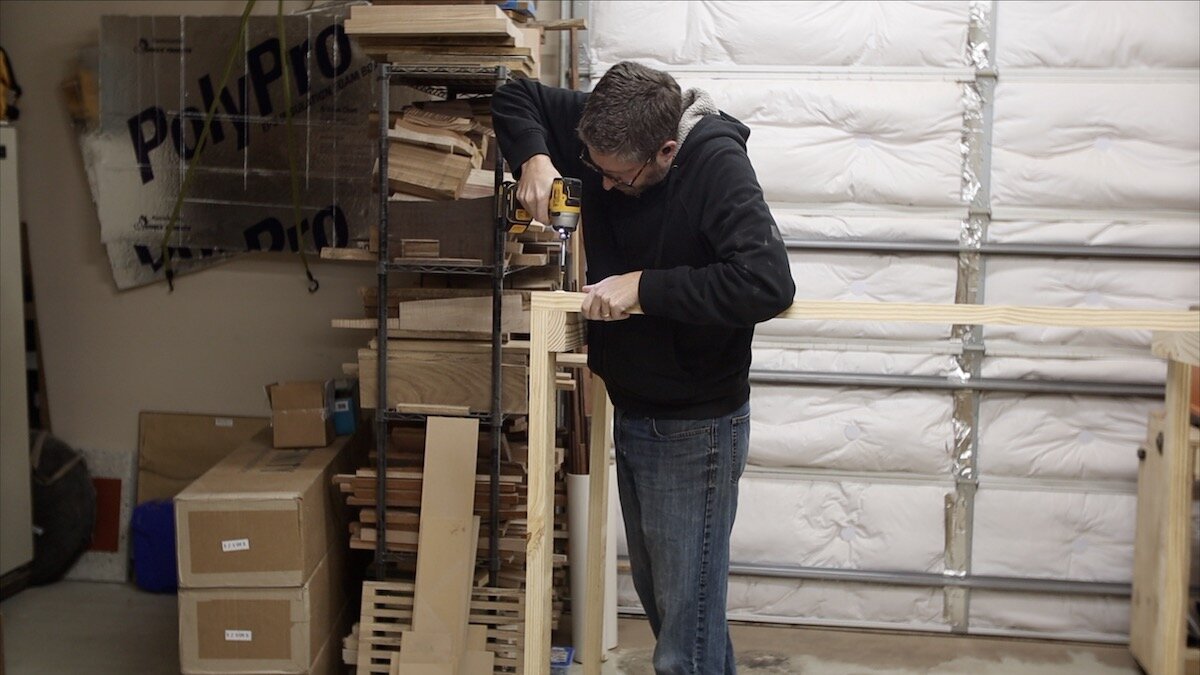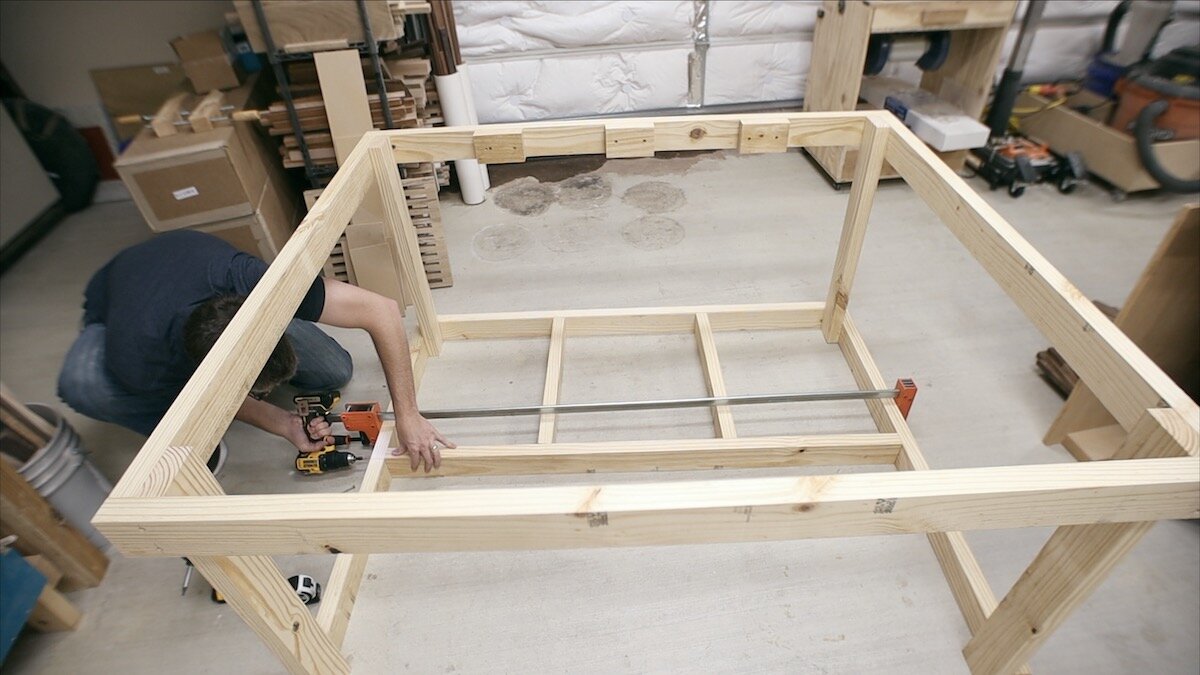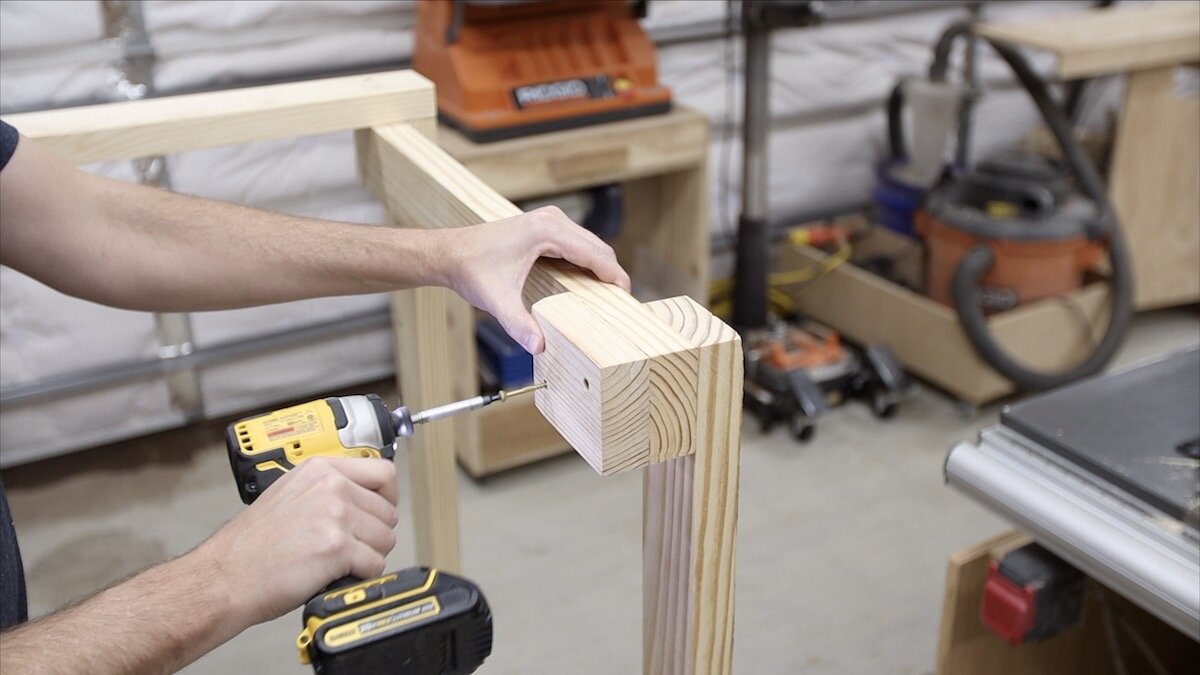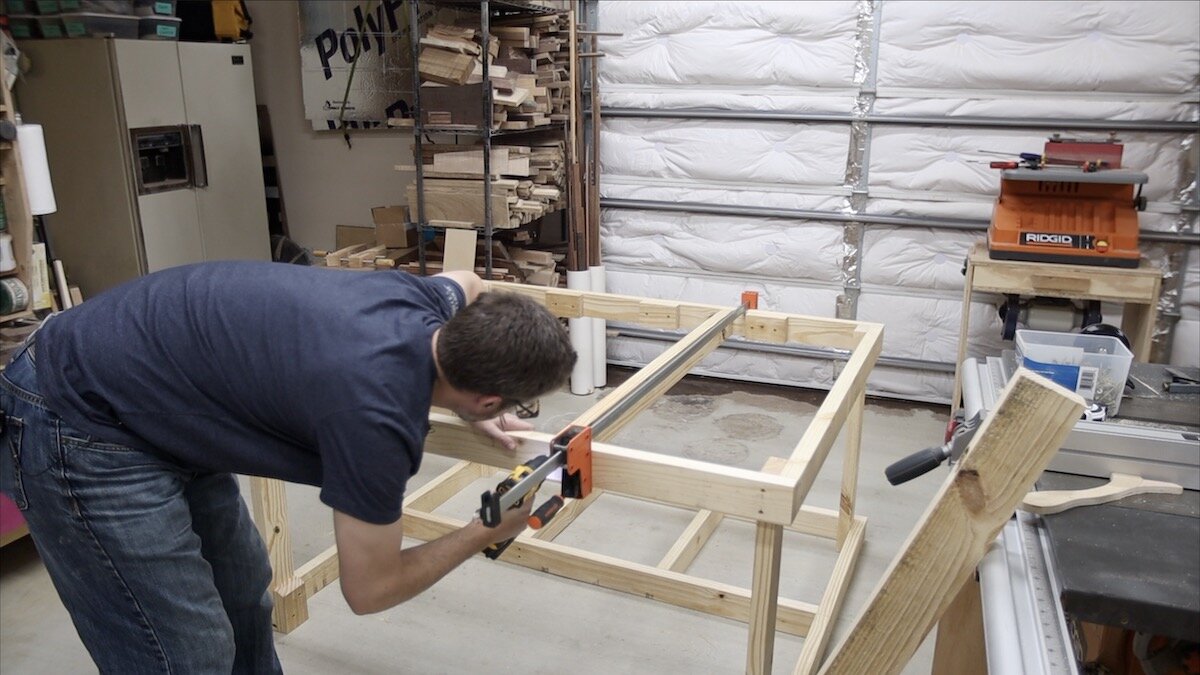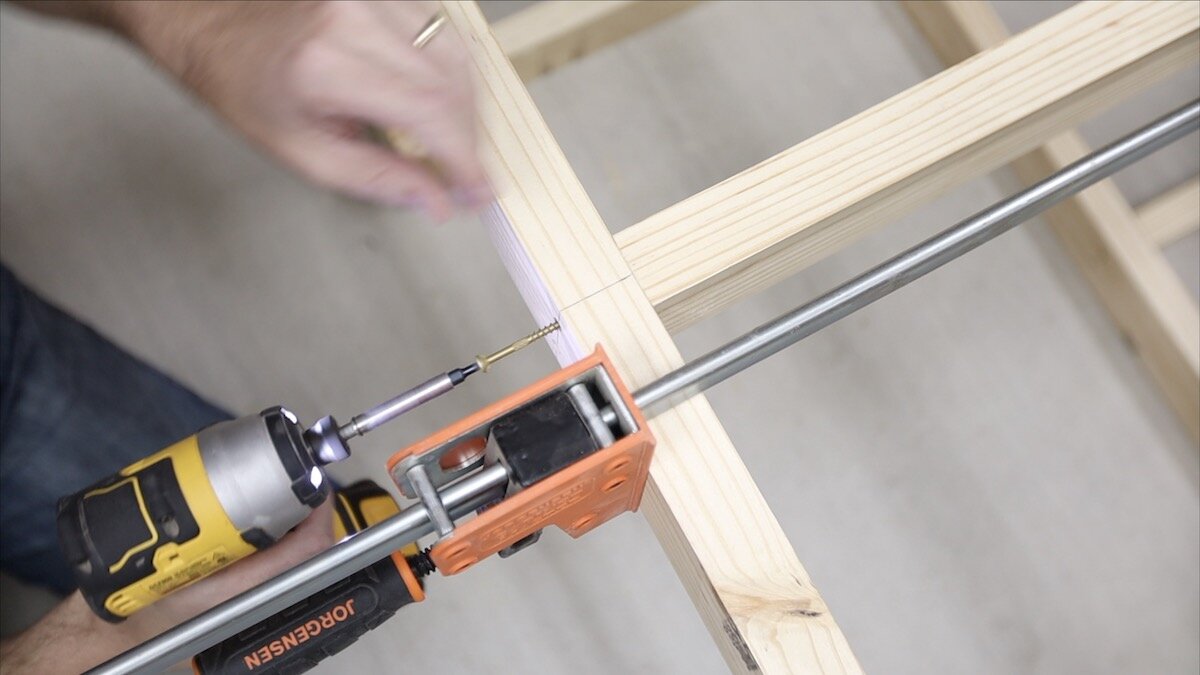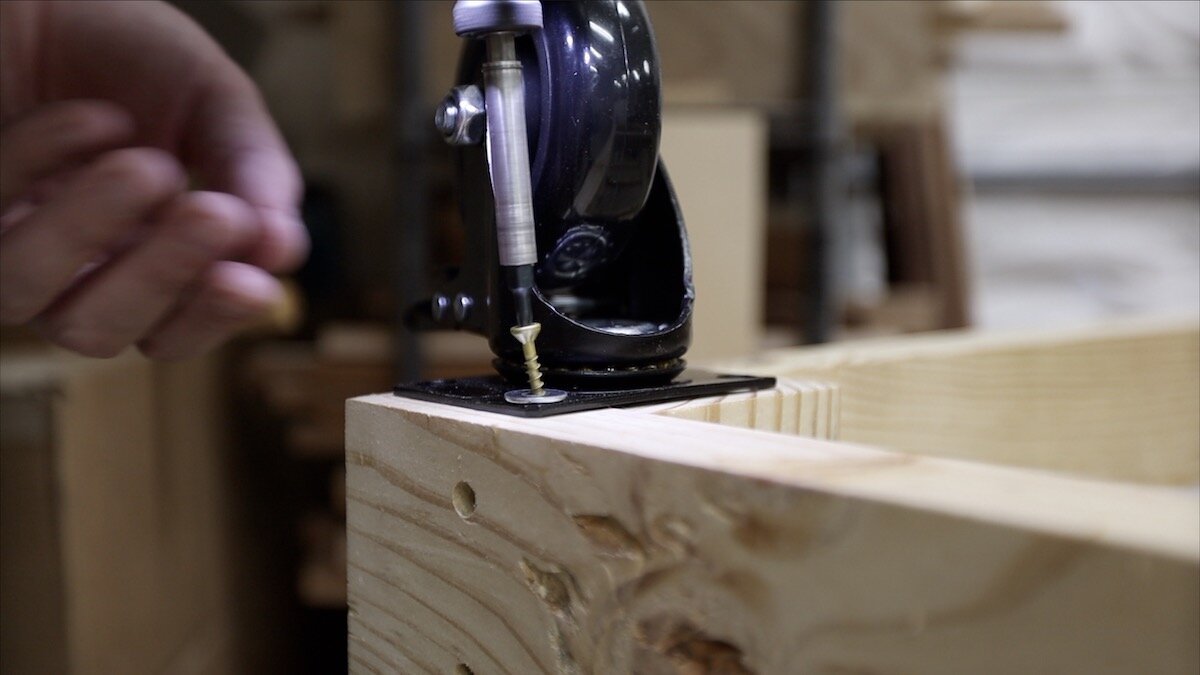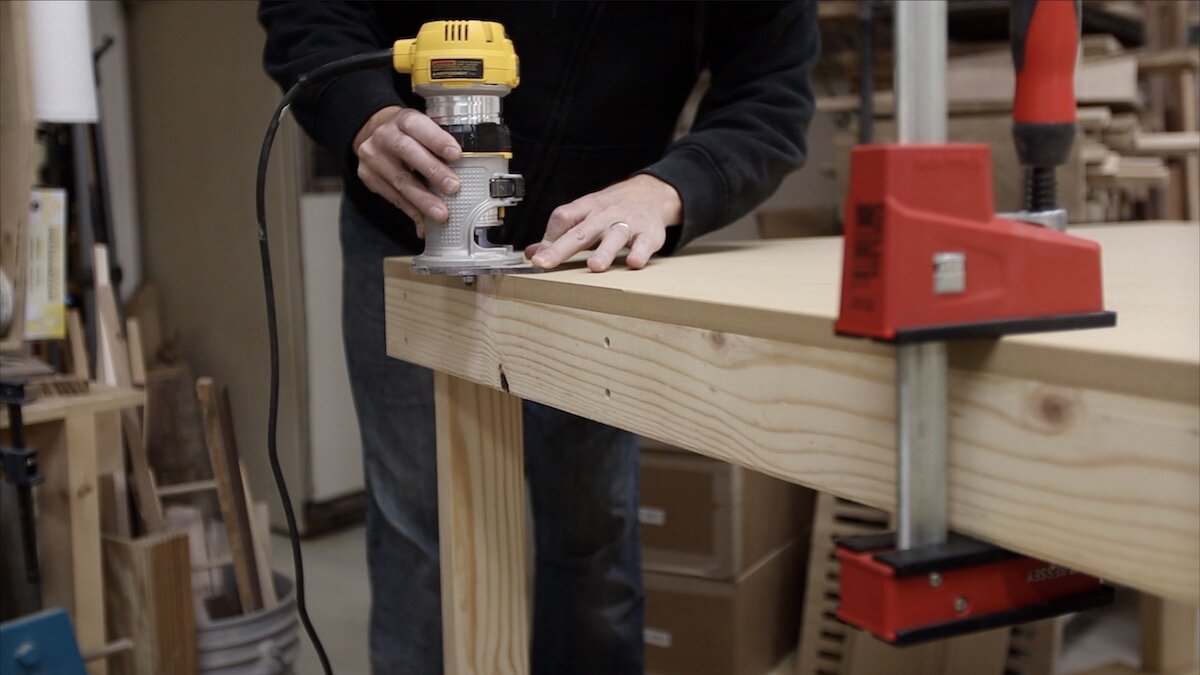DIY CNC Table Build - FREE Plans
VIDEO:
In this project, I’m showing how I made this sturdy, but inexpensive CNC table. It could also be used as an outfeed table for your table saw, or even just as a workbench. Watch the video and follow along with the steps below!
BACKGROUND:
I’ve rearranged my shop recently, and most notably for the dust collection that I hard piped in a few months back. But, while I was at it, I thought long and hard about how I wanted things set up. It was the perfect opportunity to rearrange tools to better spots for the future.
One such spot was left open for the OneFinity CNC that was already on its way at the time of the shop adjustment. I knew the approximate dimensions of the machine and the table I wanted to build for it, so I left it open. I’ll be doing a setup video about the OneFinity soon, so keep your eyes out for that project if it is something you’re interested in.
Now, I’m finally getting around to building a table for the CNC, since it had been sitting on the floor of my shop for almost a month at the time I started building this table.
It’s a basic table with 2x4 construction and MDF for the top piece and the shelf pieces underneath. Plus, I put some casters on it so that I could move it around when I inevitably change up my shop layout again in the future. If you want FREE plans to follow along with this tutorial, find them in my store here.
Let’s get into it!
TOOLS & MATERIALS: (affiliate links)
2 1/2" Screws: https://amzn.to/2NUvES4
1 1/4" Screws: https://amzn.to/3sjYJW7
Drill & Driver: https://amzn.to/3qOPXz9
4" Double Locking Casters: https://amzn.to/2NrjSiu
Wooden Screw Clamp: https://amzn.to/3siKoJu
MILLING LUMBER TO SIZE:
At the time of doing this project, a single 2x4 was about $7 (which is pretty expensive…roughly double what it typically is), so I chose to pick up some 2x8x10’s instead since they were a little less pricey. Then, I just ripped them in half on my table saw to make 2x4’s. This was a decent amount of work, so in hindsight, it might not have been worth the extra time it took to mill them myself. However, I was able to get some really nice material out of them, so maybe it was worth it. I’ll leave that up to you if you decide to build one of these tables.
The plans are made for standard 2x4 materials since I figured that is most of what people will choose to use.
Next, I took the pieces over to my miter saw to cut all of the pieces to length. Here’s the cut list of what you need:
6 - 46”
3 - 60”
1 - 57”
2 - 5”
2 - 22”
4 - 30”
ASSEMBLY:
First, start with your side pieces. We will basically make two squares for the sides that are exactly alike. Then, we will connect them with some of the longer pieces.
Take 2 of the 46” pieces and 2 of the 30” leg pieces and that will make up one side assembly. I just used butt joints and screws for the joinery, but that will be more than plenty strong for this build. I didn’t want to use any glue since I want to be able to modify this in the future if I need to.
I like to do two screws at each intersection, kind of at a diagonal. I think it looks cool and helps distribute the force.
Repeat on all four corners of this same “square” and you will have one of the side assemblies done. Then, just repeat for the other side assembly.
CONNECT SIDE ASSEMBLIES:
Once you have both side assemblies done, use one of the longest boards to connect them. I liked the look of having this board basically cap the front of the side assemblies. That’s why I designed it like this (see the diagram for more detail of what I’m talking about). Just be sure to orient it like this.
I like to use these wooden screw clamps as an extra set of hands for something like this. You can just barely clamp them on your side assemblies and then they will sit on the ground, helping hold the side assemblies upright. That way, you’re not fighting gravity while you’re attaching the long board. Just like with the other intersections, just use two screws at each intersection. Be sure that you’re screwing into the board below…that’s why I used 2 1/2” screws. The screws I used don’t actually require pre-drilling, but I did anyway. I was putting these in pretty close to some of the edges, and I didn’t want to run the risk of them splitting the boards. Plus, I was able to easily make them sit below the surface this way.
Then, just flip the piece over carefully, since there is not much holding it all together at this point. Then, you can attach another one of the longest boards to the back side, just like you did on the front side.
The structure is getting pretty rigid at this point, so you don’t have to be as careful with it.
LOWER SHELF STRUCTURE:
Next, add the 57” piece between the two sides. This will create the structure for the lower shelf. I have the shelf as a half shelf in this plan so that you can nest a stool or small dust collector under there, but still have some room for material storage.
Secure this piece with two screws on either end, starting from the outside of the side pieces.
Space the 2 small cross supports out evenly, so that you have 3 sections. If you need to space these differently to accommodate the pieces of MDF you’ll be using for the lower shelf, that’s fine. It’s not critical that they’re spaced evenly for the integrity of the base.
Secure the small 5” pieces to the inside of the front on each side. This will give a little more of a base for the casters to attach to. I took a little time while at the miter saw earlier to add a small bevel on the edge of these small 5” pieces that would be seen. This is purely for aesthetic purposes. If you do this also, be sure to put the beveled part toward the center and pointing up.
ADD SUPPORT BRACING:
Now, we need to add some support braces so the top piece of MDF doesn’t have any chance of sagging. Just like on the lower shelf, we are going to add 2 supports so that the top will not have any span more than about 19” without a brace underneath.
After marking where to put the braces, grab the last 2 46” inch pieces and install them the same way you did the lower shelf braces. I used a clamp to kind of hold pressure so it would stay in place as I secured each of the braces.
Take just a couple of seconds to use a square to strike a line where your screws need to go. It’ll make a big difference in how the finished table looks, especially with these screws since they’re in the front of the table.
SANDING:
I didn’t go crazy with it, but I did take a couple of minutes to sand the piece. I just wanted to remove some of the writing that was on the 2x8’s and clean them up a bit.
ADDING CASTERS:
Before too much weight gets on this base with the MDF, it’s a good idea to flip it over and attach the casters. These are the simple screw in type, so nothing much to it. If the ones you have don’t come with washers, it might be a good idea to use some.
After you get the casters installed, flip the table back over. I chose to lock the wheels so the whole thing would not run out from under me while I was trying to flip it. It’s already quite heavy at this point!
TOP OF THE TABLE AND SHELF:
Now, it’s time to cut out all of the MDF parts to use for the top of the table and the shelf platform. If you don’t have any of this rigid foam and you do have a track saw, pick some up. It’s so easy to lay your full sheet of MDF down on it on the floor and safely make a cut all the way across.
I designed the top to be this size so you just have to make a single cut for the top piece. The sheet comes 49” wide (different than standard sheet goods), so by cutting it at 60”, you’ll have a perfect fit with the base you just made.
The reason I say you’ll have to have a sheet and a half of MDF is that you cannot get quite what you need to cover the lower shelf with what’s left from this cut. Not a problem, you’ll have just a little MDF left that you can make another shop project with. ;)
If you don’t want to have to pick up another half sheet of MDF, just use whatever scraps you have lying around to cover the bottom shelf.
I wanted to notch the MDF out for the lower shelf to sit around the legs, so I marked where I needed to cut in either direction, and handled that with a hand saw. It just seemed the easiest solution, but you could obviously do this with any number of things such as a band saw or jigsaw.
ATTACH THE MDF:
To attach the MDF, I’m just using 1 1/4” screws. There’s no need for these to be very long, so this seemed an appropriate size. Again, I’m pre-drilling so the screws can sit below the surface.
For one of the cross braces on the lower shelf, I had to kind of angle the screws to be sure to hit the brace underneath. That’s just because I had two boards that had to attach to the same one, since I was using some scrap pieces.
The top piece of MDF was pretty much the same as the lower shelf. But I noticed there were a couple of places on the top where the MDF hung over the structure just a little here and there. I took a flush trim bit in my trim router and just flushed that up. I’m not sure why this was, but I’m sure some of the 2x8’s weren’t perfectly flat/straight. Not a big deal.
Then, I just swapped the bit for a small 1/8” roundover bit and fave all of the edges a softer feel.
Be sure to wear a respirator…this is nasty stuff when it kicks up the dust.
With the clamps still holding the MDF in place, I marked out where my cross supports were with a long ruler. Then, I started putting in the screws, spacing them about 10” apart. There’s not a real reason behind this, I just thought it looked nice. Again, it doesn’t take a couple of extra minutes to space these the same, and it makes a big difference in the look of things.
CONCLUSION:
Move the table into its final resting place because you’re done! Now, that wasn’t so hard, was it?
I’m really happy with how this table turned out. It’s going to be a great spot to hold my CNC and plenty of materials. Even if you’re not using it to hold a CNC router, it would be a great assembly table or outfeed table.
Again, if you want the FREE plans for this table, you can find them in my store here.
I’d love to see if you build one. Please tag me on Instagram @Brudaddy . Thanks for checking out this project and I’ll see you on the next project really soon!
